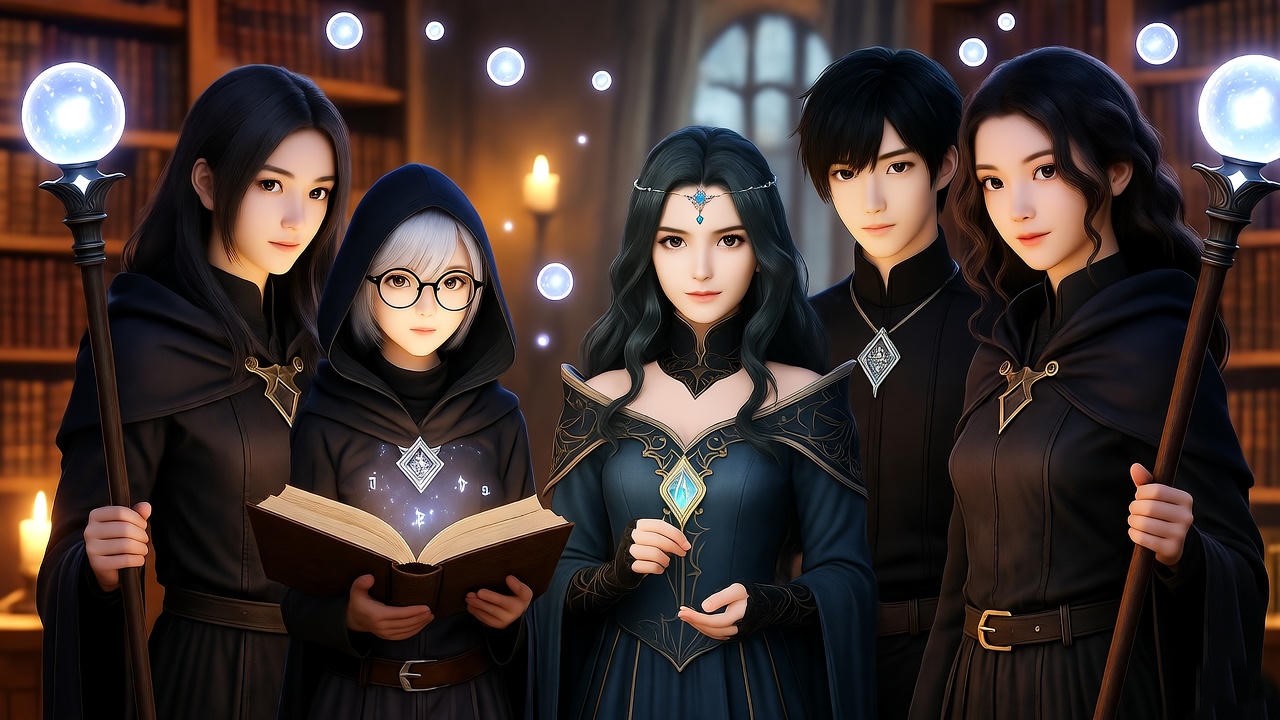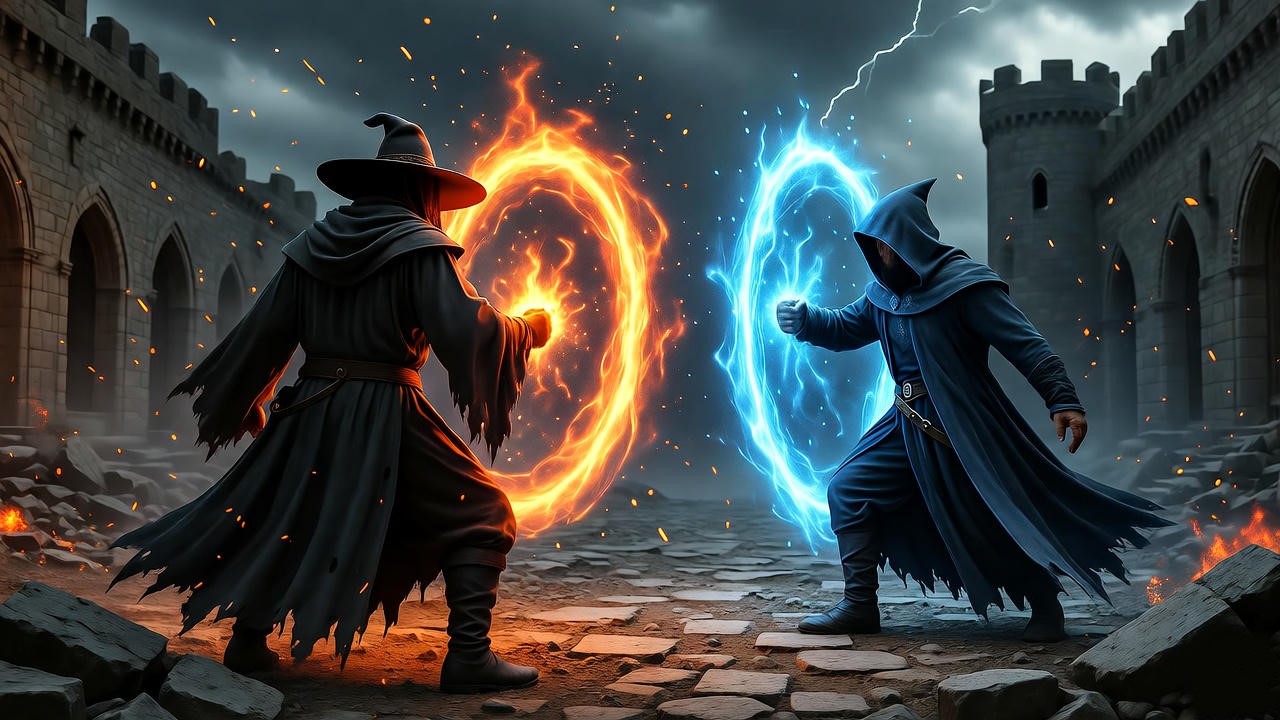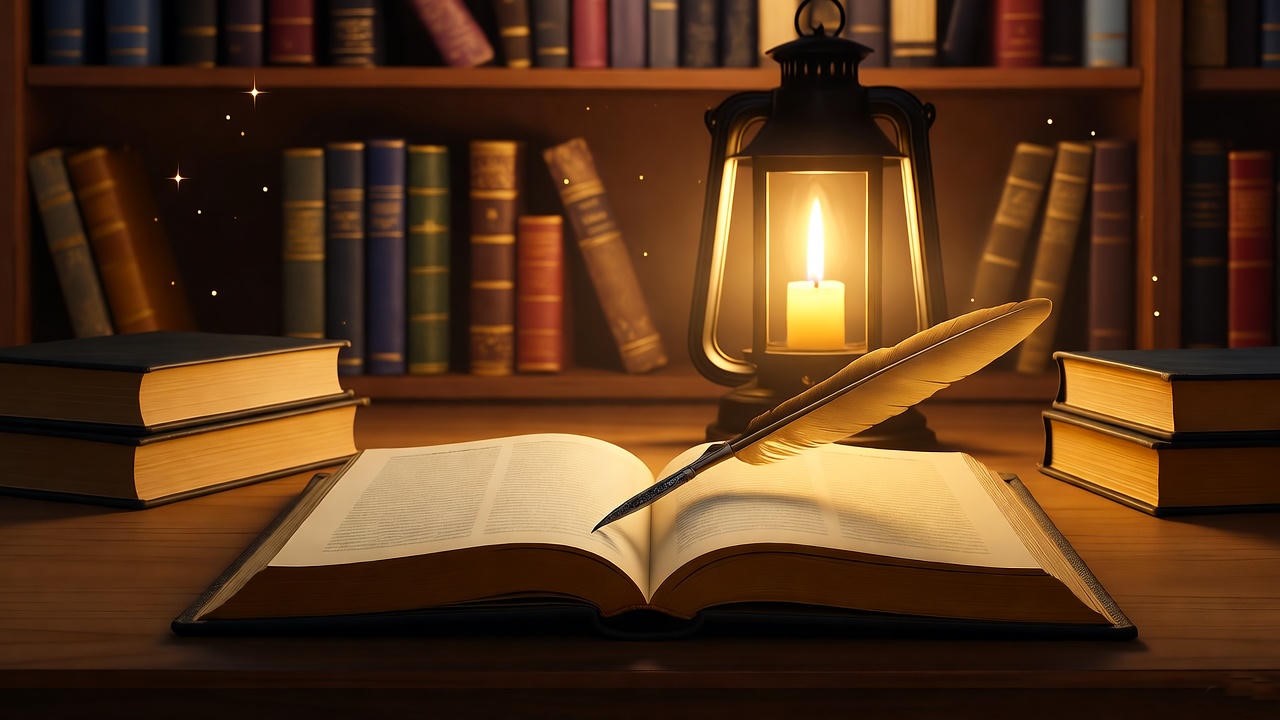Imagine sitting in a cozy café, scribbling the first lines of a story that transports readers to a world as enchanting as Hogwarts. J.K. Rowling did just that, turning her vision into the global phenomenon of Harry Potter. For aspiring authors, mastering Harry Potter book writing is about capturing that same magic—crafting stories that blend wonder, emotion, and adventure. Whether you’re a lifelong Potterhead or a fantasy writer seeking inspiration, this guide offers expert-backed strategies to create spellbinding tales. With insights drawn from Rowling’s techniques and my own experience as a creative writing enthusiast, you’ll learn how to weave magical narratives that captivate readers.
This article delivers seven actionable tips to help you craft original, immersive stories inspired by the Harry Potter universe. From building vivid worlds to writing unforgettable characters, these strategies address the needs of writers eager to create fantasy novels that resonate. Let’s dive into the art of magical storytelling and unlock your creative potential.
Understanding the Magic of Harry Potter-Inspired Writing
Why Harry Potter’s Storytelling Resonates
The Harry Potter series has sold over 500 million copies worldwide, captivating readers with its universal themes of friendship, courage, and the battle between good and evil. These elements resonate because they tap into human experiences—loyalty in Ron’s friendship, bravery in Harry’s defiance of Voldemort, and love in Lily’s sacrifice. As a writer, you can harness these themes to create stories that feel timeless and emotionally compelling, drawing readers into your magical world.

Core Elements of the Harry Potter Universe
Rowling’s universe thrives on a rich magic system, detailed settings, and iconic character archetypes. Spells like Expecto Patronum follow clear rules, making magic believable. Settings like Diagon Alley burst with sensory details—cobblestone streets, the scent of parchment, the chatter of witches. Archetypes like the Chosen One (Harry) or the Wise Mentor (Dumbledore) anchor the narrative. To write a Harry Potter-inspired story, study these elements and adapt them to create something uniquely yours, ensuring your world feels authentic and immersive.
The Importance of Staying Original
While drawing inspiration from Harry Potter, originality is crucial to avoid plagiarism and stand out. Rowling herself built on classic fantasy tropes but added unique twists, like the concept of Horcruxes. Your story should reflect your voice and vision—perhaps a magical academy in a desert oasis or a hero wielding elemental magic. As fantasy author Neil Gaiman once said, “The world always seems brighter when you’ve just made something that wasn’t there before.” Create something fresh to honor Rowling’s legacy while carving your own path.
Expert Insight
Bestselling fantasy author Brandon Sanderson notes, “Harry Potter taught me how to balance intricate world-building with emotional stakes. It’s about making readers care.” Sanderson’s perspective underscores the need to blend creativity with relatability, a principle we’ll explore throughout these tips.
Tip 1: Build a Believable Magical World
Create Consistent Magic Systems
A compelling magic system needs rules to feel real. In Harry Potter, spells require specific wand movements and incantations, like Wingardium Leviosa. Define your magic’s limits—does it drain energy? Require rare ingredients? For example, in your story, magic might stem from ancient runes, with overuse causing physical exhaustion. Consistency prevents plot holes and keeps readers immersed. Study Rowling’s approach: her magic is structured yet flexible, allowing for surprises like the Patronus charm’s unique forms.

Immerse Readers in Vivid Settings
Settings in Harry Potter, like the Forbidden Forest or Hogsmeade, feel alive with details—the rustle of leaves, the glow of candlelit shops. To achieve this, use sensory descriptions: sights, sounds, smells, and textures. Imagine a magical marketplace where vendors hawk glowing crystals and the air smells of spiced potions. Ground your settings in cultural or historical context—perhaps your world reflects ancient Celtic traditions or futuristic mysticism—to make them vivid and memorable.
Balance Familiarity and Novelty
Readers love familiar fantasy elements (e.g., magical schools, mythical creatures) but crave originality. Avoid clichés like generic “evil overlords” by adding unique twists. For instance, instead of a Hogwarts-like castle, create a floating academy powered by enchanted winds. Draw inspiration from Rowling’s ability to reimagine tropes—her Dementors aren’t just monsters but embodiments of despair. Blend the familiar with the unexpected to craft a world that feels both comforting and thrilling.
Example: A Unique Magical School
The Academy of Starwoven Threads: Nestled in a valley where stars touch the earth, this school trains weavers who craft spells from celestial threads. Classrooms shimmer with constellations, and students wield star-tipped needles. Unlike Hogwarts’ stone walls, this academy’s halls shift with the night sky, reflecting the weavers’ emotions. Magic requires precision—overweaving risks unraveling reality itself. This setting feels magical yet distinct, offering a fresh take on the school trope.
Tip 2: Craft Relatable and Memorable Characters
Develop Archetypal Heroes and Villains
Harry Potter’s characters are rooted in archetypes but feel unique due to their depth. Harry, the Chosen One, is relatable because of his doubts and loyalty. Voldemort, the Dark Lord, is terrifying yet humanized by his fear of death. Create archetypes—a brave hero, a cunning villain—but give them distinct traits. Perhaps your hero is a reluctant mage with a knack for puzzles, or your villain seeks power to resurrect a lost love. These nuances make characters unforgettable.

Use Flaws and Growth Arcs
Flaws drive character growth. Harry’s impulsiveness leads to mistakes, like trusting the fake Moody, but fuels his bravery. Hermione’s perfectionism makes her brilliant but rigid, evolving as she embraces flexibility. Give your characters flaws—maybe a hero’s arrogance alienates allies or a villain’s obsession blinds them to betrayal. Craft arcs where characters overcome or succumb to these flaws, creating emotional journeys that resonate with readers.
Create Supporting Casts That Shine
Secondary characters like Ron, Snape, and Luna enrich Harry Potter’s narrative. Ron’s humor balances Harry’s intensity, while Snape’s complexity adds moral ambiguity. Your supporting cast should complement the protagonist—perhaps a witty best friend or a mysterious mentor. Ensure each character has a purpose, like advancing the plot or revealing themes. For example, a quirky potion-maker might provide comic relief while hiding a crucial secret.
Tip: Character Creation Checklist
- Define their core desire (e.g., Harry’s need to belong).
- Assign a flaw that creates conflict (e.g., Hermione’s know-it-all attitude).
- Give them a unique trait or quirk (e.g., Luna’s dreamy demeanor).
- Plan a growth arc tied to the story’s themes.
- Ensure they impact the plot or protagonist’s journey.
Tip 3: Master Plotting with Stakes and Conflict
Structure a Hero’s Journey
Harry Potter follows the hero’s journey: an ordinary world (Privet Drive), a call to adventure (Hagrid’s arrival), and trials leading to triumph. Adapt this structure for your story. Start with a familiar setting, introduce a catalyst (e.g., discovering a magical artifact), and escalate challenges (e.g., facing a dark sorcerer). This framework, rooted in Joseph Campbell’s work, ensures a satisfying narrative arc that feels epic yet relatable.

Incorporate High Stakes
High stakes keep readers invested. Harry’s battles aren’t just about survival but protecting his friends and stopping Voldemort’s tyranny. Create personal stakes—perhaps your hero risks losing their family—and global ones, like a world-ending curse. Escalate stakes gradually: a small skirmish might lead to a war threatening the magical realm. Rowling’s stakes, like the prophecy tying Harry to Voldemort, make every choice feel monumental.
Use Subplots Effectively
Subplots, like Harry’s Quidditch matches or Ron’s family dynamics, add depth without overshadowing the main plot. Weave subplots that enhance themes or character arcs. For example, a romance subplot could mirror the hero’s struggle for trust, or a rivalry could reflect the story’s central conflict. Ensure subplots resolve satisfyingly, tying back to the main narrative, like how Harry’s friendships bolster his fight against Voldemort.
Example: Sample Plot Outline
- Act 1: A young scribe discovers a forbidden spellbook in a desert library, revealing their magical heritage.
- Act 2: They train at a mystical academy, facing rivals and uncovering a plot to unleash an ancient curse.
- Act 3: The scribe confronts the curse’s creator, sacrificing a cherished memory to save their world.
- Subplot: A friendship with a rebellious classmate teaches the scribe to trust others, aiding their final battle.
Tip 4: Infuse Themes That Resonate
Explore Universal Themes
The Harry Potter series captivates readers through universal themes like love, sacrifice, and destiny. Lily’s sacrifice for Harry underscores the power of love, while Harry’s role as the “Chosen One” explores destiny’s weight. To craft a magical story, weave themes that resonate deeply—perhaps loyalty in a hero who risks everything for their community or redemption in a villain seeking atonement. These themes connect readers emotionally, making your story timeless and impactful, much like Rowling’s exploration of good versus evil.
Address Modern Issues
While staying true to the magical tone, consider incorporating contemporary issues to add relevance. For example, diversity can shine through a cast of characters from varied magical cultures, reflecting inclusivity. Mental health themes, like Harry’s struggles with grief, can manifest in a hero battling self-doubt after a magical trauma. Blend these issues subtly into your narrative to maintain the fantastical atmosphere while grounding the story in real-world emotions, appealing to modern readers.
Balance Light and Dark Tones
Rowling masterfully balances humor (Fred and George’s pranks) with darkness (Dementors’ despair). This contrast keeps readers engaged through emotional highs and lows. In your story, pair light moments—like a quirky magical festival—with darker conflicts, such as a looming war. For instance, a scene of students celebrating a magical holiday could precede a chilling betrayal. This balance ensures your story feels dynamic, mirroring the emotional rollercoaster of Harry Potter.
Expert Insight
Literary critic Lev Grossman observes, “Harry Potter’s themes of loss and hope resonate because they’re universal yet deeply personal.” Grossman’s analysis highlights the importance of grounding magical stories in human experiences, ensuring readers connect with your narrative on an emotional level.
Tip 5: Write Dialogue That Sparks Magic
Capture Unique Character Voices
Distinct dialogue brings characters to life. Hagrid’s rough, warm dialect (“Yer a wizard, Harry!”) contrasts with Snape’s sharp, measured tone. To achieve this, give each character a unique speech pattern—perhaps a young mage speaks in riddles, or a mentor uses formal, archaic phrases. Reflect their personality, background, and role in the story. For example, a street-smart potion vendor might use slang, while a royal sorcerer speaks with elegance, enhancing immersion.
Use Dialogue to Reveal Plot and Character
Rowling uses dialogue to advance the plot and reveal character depth. Dumbledore’s cryptic conversations hint at hidden truths, like the prophecy in Order of the Phoenix. Craft dialogue that serves multiple purposes: a heated argument might reveal a hero’s fear of failure while foreshadowing a betrayal. Avoid exposition dumps—let characters reveal key information naturally, such as through banter or confessions, keeping readers engaged and the story flowing.
Avoid Overused Tropes
Clichéd phrases like “You’re our only hope!” can weaken your story’s originality. Instead, create fresh dialogue that reflects your world’s unique magic. For example, instead of “cast a spell,” a character might say, “weave the threads of starlight.” Study Rowling’s inventive language—terms like “Muggle” or “Quidditch”—and craft your own magical lexicon to make dialogue feel authentic and captivating.
Tip: Dialogue-Writing Exercise
Write a scene where two characters discuss a magical artifact in a bustling market. One is a curious apprentice, the other a secretive vendor. Use their dialogue to reveal the artifact’s power and hint at a hidden danger. For example:
- Apprentice: “Why’s this amulet glowing like a trapped star?”
- Vendor: “Mind yer hands, lad. It hums ‘cause it remembers the old wars. Touch it wrong, and it’ll sing your soul to sleep.”
Tip 6: Create Immersive Magical Conflicts
Design Unique Magical Battles
Magical battles in Harry Potter, like the Battle of Hogwarts, thrill readers with clear rules and vivid imagery. Create battles that reflect your magic system—perhaps mages channel energy through crystals, with overuse causing them to shatter. Define how combatants strategize: do they combine spells for greater effect, like Harry’s Expelliarmus and Hermione’s shields? Describe the action vividly—sparks flying, ground trembling—to immerse readers in the chaos and excitement.
Balance Action with Emotion
Action gains impact when tied to emotion. Harry’s duel with Voldemort in Deathly Hallows is gripping because it’s personal—decades of loss and sacrifice culminate in that moment. Infuse your battles with emotional stakes: a hero might fight to save a mentor, their desperation fueling risky spells. For example, a mage could unleash a forbidden spell to protect their sibling, knowing it might cost their own magic. This depth makes conflicts unforgettable.
Incorporate Magical Artifacts and Creatures
Artifacts (e.g., the Elder Wand) and creatures (e.g., Dementors) amplify Harry Potter’s conflicts. Create your own: a cursed mirror that traps souls or a phoenix-like creature that rebirths in starlight. Ensure these elements follow your world’s rules and enhance the story. For instance, an artifact might amplify a hero’s power but corrupt their mind, adding tension. Creatures should have clear roles—perhaps a guardian beast aids the hero but demands a steep price.
Example: Sample Magical Duel Scene
Scene: In a moonlit ruin, a young mage, Kael, faces a rogue sorcerer wielding a shadow-cloak artifact. Kael channels magic through a crystal staff, but each spell drains his strength. The sorcerer taunts, “Your light’s fading, boy.” Kael, desperate to save his mentor trapped in the cloak, unleashes a radiant burst, shattering his staff but banishing the shadows. The emotional weight—Kael’s fear of losing his mentor—makes the action resonate, echoing Harry’s high-stakes battles.
Tip 7: Polish Your Manuscript for Publication
Edit for Clarity and Flow
Rowling’s prose is accessible yet vivid, balancing action with introspection. Edit your manuscript to ensure clarity—cut redundant words, tighten sentences, and vary pacing. For example, describe a magical forest as “emerald leaves whispering secrets” rather than “very green trees that made sounds.” Read aloud to catch awkward phrasing and ensure your story flows like a spell, keeping readers enchanted from start to finish.

Seek Feedback from Beta Readers
Beta readers provide fresh perspectives. Join writing communities, like Reddit’s r/HPfanfiction or local critique groups, to share your work. Ask for specific feedback: Does the magic system make sense? Are characters relatable? Rowling famously revised Philosopher’s Stone multiple times based on feedback, refining her story. Be open to criticism but stay true to your vision, using feedback to strengthen your manuscript’s impact.
Pitching to Publishers or Self-Publishing
Traditional publishing requires a polished query letter and synopsis, emphasizing your story’s unique hook. Research fantasy-friendly publishers, like Tor or Bloomsbury, and tailor your pitch to their guidelines. Alternatively, self-publishing via platforms like Amazon Kindle Direct Publishing offers creative control. Study successful self-published fantasy authors, like Lindsay Buroker, for strategies. Whichever path you choose, ensure your manuscript is professionally edited to compete in the market.
Tip: Manuscript Preparation Checklist
- Revise for plot consistency and character arcs.
- Hire a professional editor or use tools like ProWritingAid.
- Format according to publisher guidelines (e.g., double-spaced, 12-point font).
- Write a compelling query letter highlighting your story’s magical appeal.
- Test your opening chapter with beta readers to ensure it hooks.
Common Mistakes to Avoid in Harry Potter-Inspired Writing
Over-Reliance on Rowling’s World
Copying Hogwarts’ houses or spells like Lumos risks legal issues and lacks originality. Instead, create distinct systems—perhaps guilds based on elements or chants tied to emotions. Draw inspiration from Rowling’s creativity, not her specifics, to craft a world that feels fresh and respects intellectual property.
Neglecting Original World-Building
A generic magical world feels flat. Ensure your setting has unique culture, history, and rules. For example, a city where magic flows from a sacred river requires specific rituals, unlike Hogwarts’ wand-based system. Flesh out details—trade, politics, myths—to make your world as immersive as Rowling’s.
Weak Pacing or Overloaded Plots
Overloading your story with subplots or rushing key moments can disengage readers. Balance action, dialogue, and exposition. For instance, don’t cram a war, romance, and mystery into one chapter. Use Rowling’s pacing—gradual reveals in Chamber of Secrets build suspense—to guide your story’s rhythm.
Expert Insight
Writing coach K.M. Weiland advises, “Fanfiction is a great playground, but professional writing demands originality. Build your world with intention.” Her advice underscores the need to move beyond imitation, ensuring your story stands on its own merit.
Tools and Resources for Aspiring Writers
Writing Software and Apps
Tools like Scrivener help organize complex fantasy manuscripts, with features for tracking world-building details. Grammarly or ProWritingAid refines prose, catching errors and suggesting stylistic improvements. These tools streamline the writing process, letting you focus on creativity while maintaining professional polish.

Books and Courses on Fantasy Writing
Read “On Writing” by Stephen King for practical storytelling advice or “The Fantasy Fiction Formula” by Deborah Chester for genre-specific tips. Online platforms like MasterClass offer courses from authors like Neil Gaiman, covering world-building and character development. These resources build your skills, grounding your work in expert techniques.
Harry Potter Fan Communities
Engage with communities like Reddit’s r/HPfanfiction or the Leaky Cauldron forums for inspiration and feedback. These groups offer insights from fellow Potterheads and writers, helping you refine your story. Share excerpts or discuss ideas to connect with readers who love magical tales.
Tip: Curated Resource List
- Scrivener: For organizing complex plots and world details.
- Grammarly: For polishing prose and catching errors.
- “On Writing” by Stephen King: For mastering storytelling fundamentals.
- MasterClass (Neil Gaiman): For learning world-building from a fantasy expert.
- Reddit’s r/HPfanfiction: For connecting with Harry Potter-inspired writers.
- NaNoWriMo: For community support during writing challenges.
- The Writer’s Digest: For articles on fantasy publishing trends.
FAQs
Can I write a Harry Potter-inspired story without infringing on copyright?
Yes, as long as you create original characters, settings, and magic systems. Avoid using Rowling’s specific names (e.g., Hogwarts, Dementors) and focus on your own world to stay legally safe and creatively authentic.
How do I create a magic system that feels as rich as Hogwarts’?
Define clear rules (e.g., magic sources, costs) and tie them to your world’s culture. For example, a system based on lunar phases could require rituals during full moons, adding depth and consistency.
What are the best ways to develop a villain as compelling as Voldemort?
Give your villain a personal motivation (e.g., revenge, fear) and humanizing traits. Show their impact through actions—like a curse that disrupts the hero’s life—making them complex and threatening.
How can I make my magical world appeal to both Harry Potter fans and new readers?
Blend familiar fantasy tropes (e.g., magical schools) with unique elements (e.g., a sky-bound academy). Focus on universal themes like friendship to draw in diverse readers while keeping the magic fresh.
Should I aim for traditional publishing or self-publishing for my fantasy novel?
Traditional publishing offers credibility but is competitive; self-publishing gives control and faster release. Research both, weigh your goals, and ensure your manuscript is polished for either path.
Crafting a Harry Potter-inspired story is a magical journey, blending creativity with discipline. These seven tips—building vivid worlds, crafting relatable characters, mastering plots, infusing themes, writing sparkling dialogue, creating immersive conflicts, and polishing your manuscript—equip you to write stories that captivate. Start today: sketch your world, outline your hero’s journey, and let your imagination soar. Join writing communities, share your work, and persevere, as Rowling did. As she once said, “Anything’s possible if you’ve got enough nerve.” Unleash your magic and create a story that enchants readers for generations.













